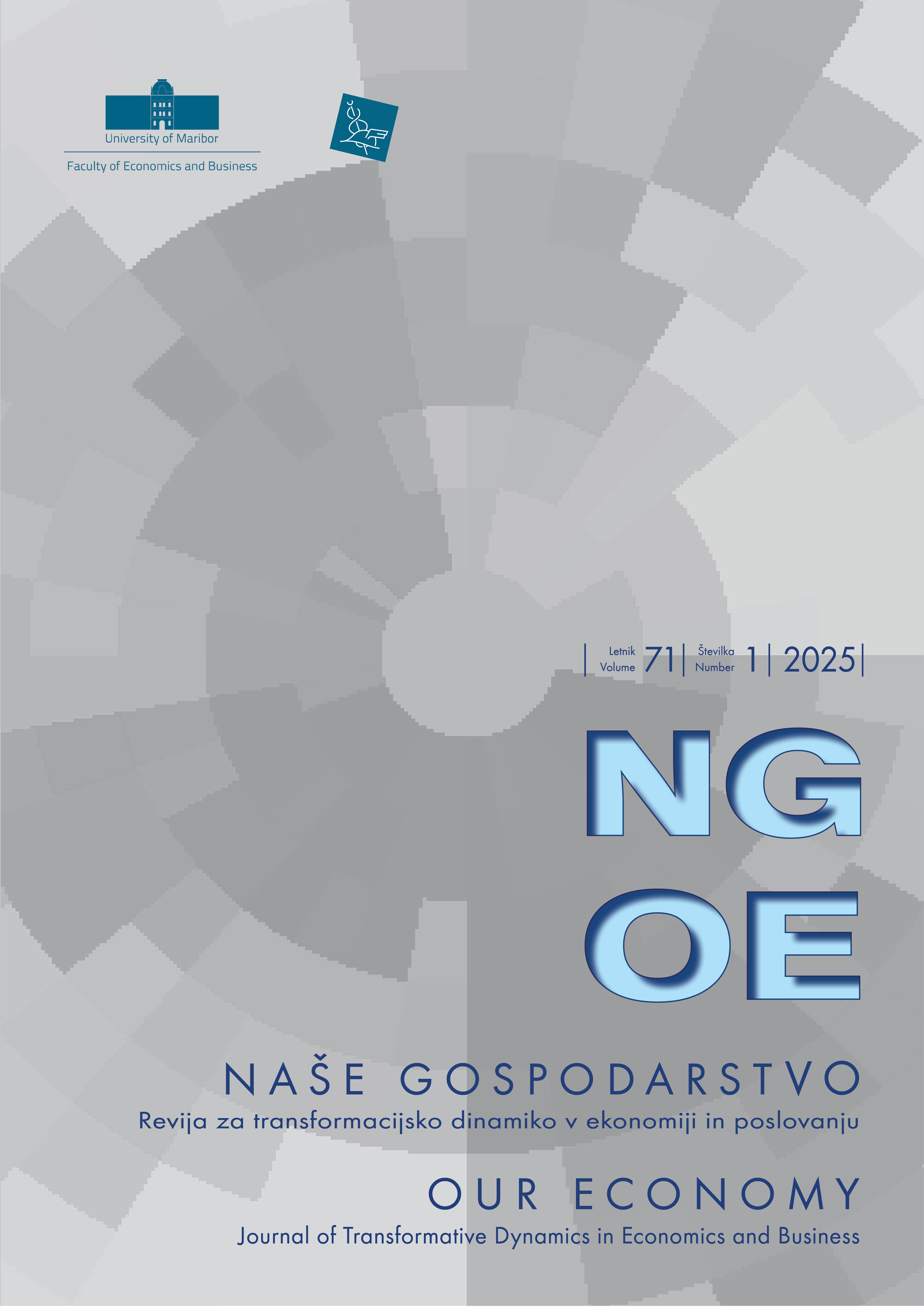Development of Slovenian Macroeconomic Imbalances and their Synchronization with EU Countries
Abstract
Slovenia and other EU member states are subject to the Macroeconomic Imbalances Procedure. This article aims to evaluate the macroeconomic imbalances of the Slovenian economy and its synchronisation with other EU countries from 2013 to 2022. Eleven Scoreboard indicators are used to monitor external and internal macroeconomic imbalances. The originality of the paper relates to the use of cluster analysis to determine Slovenia's position among other EU countries in terms of imbalance indicators by dividing EU countries into clusters based on their similarity. The process used the standardized squared Euclidean distance as the basic metric, the furthest neighbour method was used to cluster the objects, which are represented graphically by a dendrogram. Slovenia exhibited relative stability in both external and internal macroeconomic imbalances between 2013 and 2022. However, in the last three years, it showed threshold values for the nominal unit labour cost index, general government gross debt, and there was a risk associated with the development of the house price index. The cluster analysis revealed that Slovenia's external macroeconomic imbalances were significantly synchronized with core EU countries in 2014 and 2022. In 2017 and 2020, macroeconomic imbalances exhibited similarities with the Baltic and Central European countries. The internal macroeconomic balance remained stable in the monitored period, and it developed in sync with the core EU countries and Central European countries.
Downloads
Downloads
Published
Issue
Section
License
Copyright (c) 2025 Vladimíra Hovorková Valentová, Pavla Bednářová

This work is licensed under a Creative Commons Attribution-NonCommercial-NoDerivatives 4.0 International License.
